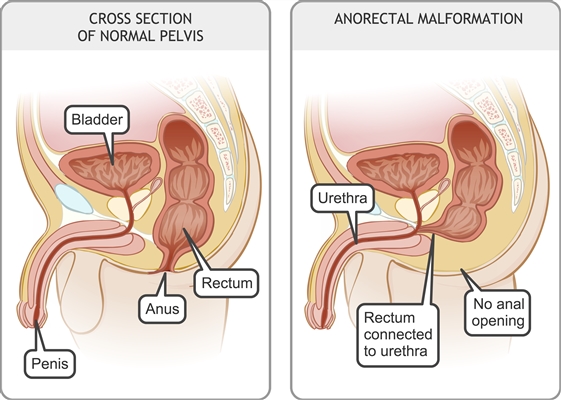
An ultrasound scan of the brain is carried out for children from birth; the procedure does not pose a danger to newborn babies. But why and how such a diagnosis is carried out is usually not told to mothers. In this material, we will explain what an ultrasound of the brain shows and whether such a procedure is needed for children.

About diagnostics
Ultrasound of the brain is a diagnostic method that belongs to the category of fairly accurate, but it is not considered highly accurate. The method allows you to see gross abnormalities in the development of the cerebral cortex, pathology of certain parts of the brain, which may indicate the presence of severe congenital and acquired diseases in the child.
For a child, this study is completely painless. Official medicine knows nothing about the dangers of ultrasound, and therefore it is imperative to agree to such an examination. The essence of the method is quite simple: ultrasound is reflected from the structures of the brain, and the return signal in the form of an image goes to the monitor. It is he who sees and analyzes the doctor.
Electroencephalography as a method of studying the brain is carried out for adults and school-age children, and neurosonography is performed for newborns and children under 1-1.5 years of age.


How is it done?
For children over 1.5-2 years old, ultrasound is performed through the temporal bones. For babies, in the course of neurosonography, a study is used through an unstretched fontanelle. This is the answer to the question to what age the NSH is usually done - until the fontanelle is tightened.
Ultrasound can be conventional, two-dimensional, or, if indicated, it can be performed with a Doppler. The second method will assess the condition of the blood vessels and adjacent tissues. Such an ultrasound scan is performed not only in the head area, but also in the neck area - this way the idea of the blood supply to the brain and the patency of the vessels is more complete.
Ultrasound is performed with a traditional external sensor or a Doppler sensor. The child is placed on a couch, after which the doctor conducts a probe through the scalp. The procedure takes about 5-10 minutes, after which the parents are given an ultrasound protocol, which indicates the results.

No special preparation for diagnosis is required. It is important for an infant and older children not to give antispasmodic drugs and analgesic pills for a couple of days. Children over one year old are not given tea on the eve of the study, since it can affect the state of the blood vessels.
Indications
According to the order of the Ministry of Health of Russia, neurosonography is performed for all children at the age of 1 month or at 3 months. Ultrasound of the brain is included in the list of examinations during the first medical examination of a child in a child's life. This does not mean that the baby cannot be given such a study earlier - according to indications, it is carried out in the maternity hospital and in any children's hospital.
Sometimes an ultrasound of the brain is included in the medical examination of children over a year old, it depends on the orders of the regional Ministry of Health. But at the request of the parents, such a procedure can be carried out at any age and in any region of the country.

Most often, premature babies need such a study - an assessment of the degree of development of the brain is usually required after the birth of such a baby, and then it is recommended for systematic monitoring of the development of the child. Also, neurosonography is recommended for children who were born through the mother's caesarean section.
In what cases does a child need to undergo such an ultrasound examination? There are many indications:
- inappropriate behavior of the baby (lethargy, lack of normal appetite, frequent unreasonable crying, tremors of the limbs, squint);
- regular bouts of headaches;
- deterioration of hearing and vision in a child;
- memory impairment, low learning ability, severe delay in speech, mental and psycho-emotional development;
- low blood pressure in a child, as well as episodes of fainting;
- a history of convulsions;
- violation of coordination of movements, cases of falls and loss of balance, which were not caused by a mechanical obstacle - for no reason;
- history of cervical and cranial trauma, including birth trauma.
An ultrasound scan of the brain is considered mandatory for children who have heart and vascular surgery. Also, the method is included in the plan for examining a child after an injury, for example, after a fall and a blow to the head - in most cases, ultrasound will accurately show a concussion, brain contusion, and the presence of hematomas.
Ultrasound scanning is used for suspected meningitis, encephalitis, meningoencephalitis, which are often complications of acute infectious diseases in childhood. Also, a diagnostic examination is indicated if the doctor suspects the presence of a tumor process.
The following factors can also become the basis for prescribing neurosonography outside the schedule:
- the baby's weight at birth, regardless of gestational age, was less than 2.7 kg - in low-birth-weight babies, even if they eat well and “catch up” with their peers, some brain anomalies are quite often found, although most of them are functional and do not require therapy;
- the child has some external developmental anomalies (six-fingered, shortening of the limbs, facial asymmetry);
- the child did not cry within the time allotted for this in obstetrics;
- labor was difficult, protracted or rapid, accompanied by premature rupture of amniotic fluid;
- pregnancy proceeded against the background of pronounced Rh-conflict between mother and fetus.


Do not be intimidated by referral to NSH, sometimes doctors are reinsured or want to make sure that the treatment that was previously prescribed to the child helped him. This happens quite often at the end of the course of treatment with a neurologist.
The final diagnosis of a child by ultrasound is impossible to establish. This method is the first that only allows you to identify an existing problem. In more detail, the essence of the problem is established using MRI, computed tomography. MRI, by the way, is performed for babies under general anesthesia, since there is no way to make the child lie still for as long as the results of the magnetic resonance imaging study are recorded.

Deciphering neurosonography
If we talk about neurosonography for babies up to one year old, then parents receive a fairly detailed conclusion, in which the doctor describes the features of the structures of the brain.
It is noted whether the departments are symmetrical, whether the grooves and convolutions are well visualized, what shape the brain structures have. The presence of fluid in the interhemispheric spaces may indicate hydrocephalus. Normally, there should be no liquid.
The ventricles of the brain should be symmetrical. Cysts, tumors, hematomas should normally be absent. Radiant beams in a healthy baby should be described as hyperechoic.


As for the abundance of figures in the conclusion, parents should not pay much attention to them if the doctor indicates in the conclusion that no pathologies have been found. But for those who are especially interested, here are the averaged norms:
- anterior horns of the lateral ventricles of the brain - 2-4 mm;
- occipital horns of the lateral ventricles - 10-15 mm;
- the body of the lateral ventricles of the brain - a maximum of 4 mm;
- the third ventricle of the brain - 3-5 mm;
- fourth ventricle of the brain - not more than 4 mm;
- interhemispheric gap - 3-4 mm;
- large cistern of the brain - no more than 10 mm;
- subarachnoid space - 3 mm.
These results are considered to be the average norm for newborns and children under 3 months of age. For toddlers older - the norms may be different, some of the parameters remain the same, some change to increase.

What can they find in a baby?
Ultrasound accurately enough shows a wide variety of deviations from the norms. Most often, the following anomalies are found in infants:
- vascular plexus cyst;
- subependymal cysts;
- arachnoid cyst;
- hydrocephalus;
- ischemia;
- hematomas of the brain tissue;
- hypertensive syndrome.
Not all pathologies require serious treatment. For example, a cyst of the choroid plexus is often found, but it does not pose any danger and in 99.9% of cases it resolves itself. The presence of subependymal cysts usually indicates that the labor was difficult. Such formations can also go away on their own, or they can turn into ischemia if they begin to increase in size. They require observation and ultrasound in dynamics.
A cyst such as an arachnoid cyst necessarily requires treatment. She herself will not work. Treatment must also be prescribed for hydrocephalus. Hematomas of brain tissue, which are often considered a normal option for premature babies, may not be normal for babies who were born on time.
Oxygen starvation, which the baby experienced during the period of intrauterine development, usually leads to ischemia.
There can be a lot of variants of the detected pathologies.
Only a qualified doctor will be able to accurately answer the mother's question about the causes, consequences and projections, about the need for treatment. All that is required of parents is simply to trust the professionals.

Reviews
Many mothers believe that an ultrasound scan of the brain can be harmful to a newborn or nursing baby. They express their concerns on thematic forums on the Internet. You can endlessly give the arguments of opponents and supporters of ultrasound diagnostics and never come to a consensus. It is up to parents to decide whether or not to do such an ultrasound, neither doctors nor the Ministry of Health can force anyone to go for a diagnostic study. If your child was prescribed neurosonography, before refusing, re-read the section on pathologies that can be detected using this method again, and also keep in mind that it is not possible to detect them in other ways.
Some mothers, on the contrary, would like to conduct such an examination for the child, but the doctor does not consider it appropriate and does not give directions. In this case, private medical centers and clinics offer a way out, where the procedure can be done quickly, without queues and referrals. The cost of a study on average in Russia is from 1,500 to 3,500 rubles (depending on the region and a specific medical center).

On social networks and on women's forums, one can often come across allegedly competent comments from "specialists" who argue that refusal from a routine examination of a child's brain through ultrasound saves the child's health. The conclusions of these "experts", who assert that due to diagnostics, some "bubbles" are formed in the child's brain, which then grow and cause significant harm to health, are not supported by anything, and from the point of view of educated and sane people, are ridiculous.
Many mothers who normally relate to this type of research assure that it is better to take a test coupon for the time when the baby is guaranteed to sleep.
In a dream, such an examination is quite possible, and children usually tolerate the procedure much better, they do not worry about the touch of an outsider (doctor).

For information on why an ultrasound of the brain is done to a child, see the next video.



